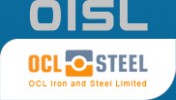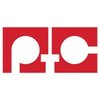Filter interviews by
Ms Agarwal Foundries Quality Engineer Interview Questions, Process, and Tips
Ms Agarwal Foundries Quality Engineer Interview Experiences
2 interviews found
(2 Questions)
- Q1. Percentage of chromium in steel?
- Ans.
Chromium content in steel typically ranges from 10-30% depending on the grade and type of steel.
Chromium is added to steel to improve its corrosion resistance, hardness, and strength.
Stainless steel typically contains around 10-30% chromium.
High-chromium steels, such as tool steels, can contain up to 30% chromium.
Chromium content can vary based on the specific grade and application of the steel.
- Q2. Advantages and Disadvantage of Sulphur in steel?
- Ans.
Sulphur in steel can improve machinability but may reduce ductility and impact strength.
Advantages: Improved machinability, easier to cut and shape
Disadvantages: Reduced ductility, impact strength, and toughness
Sulphur content should be controlled to avoid negative effects on mechanical properties
Examples: Lead-free cutting steels often contain higher sulphur levels for better machinability
(3 Questions)
- Q1. Grades of steel and Their Chemical Composition
- Ans.
Different grades of steel have varying chemical compositions to meet specific requirements.
Grades of steel include carbon steel, alloy steel, and stainless steel.
Carbon steel typically contains 0.05-2.0% carbon.
Alloy steel contains additional elements like nickel, chromium, and molybdenum.
Stainless steel has high chromium content for corrosion resistance.
Each grade has unique properties based on its chemical compositio
- Q2. Sectional weight of steel for different sizes
- Ans.
Sectional weight of steel varies based on the size of the steel section.
The sectional weight of steel is calculated by multiplying the volume of the steel section by the density of steel.
Different sizes of steel sections have different sectional weights.
For example, a 100mm x 100mm x 10mm steel section will have a different sectional weight compared to a 150mm x 150mm x 12mm steel section.
- Q3. What are the grains and grain structures inside the steel at different temperatures?
- Ans.
Grains in steel change in size and shape at different temperatures, affecting its properties.
At high temperatures, grains in steel are larger and more irregularly shaped.
As steel cools, grains become smaller and more uniform, leading to increased strength and hardness.
Grain boundaries can affect properties like toughness and corrosion resistance.
Examples: Austenite has smaller grains at lower temperatures, resulting in...
Interview Preparation Tips
I applied via Naukri.com and was interviewed in Jun 2024. There were 2 interview rounds.
(2 Questions)
- Q1. What is the chromium percentage in steel?
- Ans.
Chromium percentage in steel varies depending on the type of steel, typically ranging from 10.5% to 30%.
Chromium is added to steel to improve its corrosion resistance and hardenability.
Stainless steel typically contains around 10.5-30% chromium.
Examples of chromium-containing steel include 304 stainless steel (18% chromium) and 420 stainless steel (12% chromium).
- Q2. Sulphur Advantages and Disadvantages in Steel
- Ans.
Sulphur can improve machinability and strength in steel, but can also lead to brittleness and reduced ductility.
Advantages of sulphur in steel include improved machinability, allowing for easier cutting and shaping of the material.
Sulphur can also enhance the strength of steel, making it more suitable for certain applications.
Disadvantages of sulphur in steel include increased brittleness, which can lead to cracking an...
(2 Questions)
- Q1. What are the Grain structures of steel at different temperatures?
- Ans.
Grain structures of steel change at different temperatures affecting its properties.
At room temperature, steel has a fine grain structure which provides good strength and toughness.
As temperature increases, the grain size also increases, leading to reduced strength and toughness.
At high temperatures, steel can have a coarse grain structure which may result in lower mechanical properties.
Grain refinement techniques like...
- Q2. What is the final/finished product temperature of Rebar?
- Ans.
The final/finished product temperature of Rebar is typically room temperature.
Rebar is typically stored and used at room temperature
The temperature of Rebar can vary depending on the environment it is stored in
Rebar is not typically heated or cooled as part of the manufacturing process
Interview Preparation Tips
Top trending discussions






Interview questions from similar companies

Quality Engineer Interview Questions & Answers
Jindal Group Of Companiesposted on 10 Dec 2021
I applied via Recruitment Consultant and was interviewed in Jun 2021. There were 4 interview rounds.
Interview Questionnaire
2 Questions
- Q1. Why do you want to leave your current employment?
- Q2. What was inappropriate or bad in your company?
Interview Preparation Tips

I applied via Referral and was interviewed before Mar 2023. There were 3 interview rounds.
(1 Question)
- Q1. Technical related to applied position
(1 Question)
- Q1. Technical & general discussion
(1 Question)
- Q1. Salary & General background details

(5 Questions)
- Q1. Equipments of Lab
- Ans.
Lab equipments are tools used for testing and analysis in a laboratory setting.
Microscopes - used for magnifying small objects
Spectrophotometers - used for measuring light absorption
Centrifuges - used for separating substances based on density
Autoclaves - used for sterilizing equipment
pH meters - used for measuring acidity or alkalinity
- Q2. Solution preparation of Lab Both chemical and acid
- Ans.
Solution preparation of lab chemicals and acids involves proper handling, measuring, and mixing to ensure accuracy and safety.
Always wear appropriate personal protective equipment (PPE) such as gloves, goggles, and lab coat.
Follow the specific instructions provided in the material safety data sheet (MSDS) for each chemical or acid.
Measure the required amount of each chemical or acid using a calibrated measuring device.
...
- Q3. Testing outgoing and incoming
- Ans.
Sponge iron/iron ore/dolomite/coal
- Q4. Material despatch
- Q5. Complain attend

(2 Questions)
- Q1. Testing procedures of qc
- Ans.
Testing procedures of QC involve verifying that products meet quality standards through inspections, tests, and audits.
Developing test plans and procedures
Conducting inspections and audits
Performing tests on samples
Recording and analyzing data
Implementing corrective actions when necessary
- Q2. Last salary discussion

I applied via Naukri.com and was interviewed in Aug 2021. There were 2 interview rounds.

(5 Questions)
- Q1. What are tha fuction of otto cycle and Diesel Cycle?
- Ans.
Otto cycle is used in gasoline engines and Diesel cycle is used in diesel engines.
Otto cycle is a constant volume cycle used in gasoline engines.
Diesel cycle is a constant pressure cycle used in diesel engines.
Otto cycle has a higher compression ratio compared to Diesel cycle.
Otto cycle has a spark plug for ignition while Diesel cycle uses compression ignition.
Both cycles involve four processes: intake, compression, po
- Q2. Different b/w Stress and Strain?
- Ans.
Stress is the force applied to a material, while strain is the resulting deformation or change in shape.
Stress is a measure of the internal forces within a material, while strain is the measure of the deformation or change in shape.
Stress is typically measured in units of force per unit area (such as N/m^2 or Pa), while strain is a dimensionless quantity.
Stress can cause a material to deform or break, while strain is t...
- Q3. How many types of Ramming mass?
- Ans.
There are two main types of Ramming mass: acidic and basic.
Acidic Ramming Mass: used for lining induction furnaces and arc furnaces.
Basic Ramming Mass: used for lining steel ladles and EAF (Electric Arc Furnace).
- Q4. How Many Types of Steel?Explained tha percentage of Steel?
- Ans.
There are several types of steel, each with different properties and uses. The percentage of steel in a particular alloy can vary.
Types of steel include carbon steel, alloy steel, stainless steel, tool steel, and high-speed steel.
The percentage of steel in an alloy can range from as low as 0.2% to as high as 2.1% depending on the type of steel and its intended use.
For example, carbon steel typically contains around 0.2...
- Q5. Explain Thermodynamics Law 1st 2nd and 3 rd?
- Ans.
First law states energy cannot be created or destroyed, second law states entropy always increases, third law states entropy approaches zero at absolute zero.
First Law: Energy cannot be created or destroyed, only transferred or converted. Example: A car engine converts fuel into mechanical energy.
Second Law: Entropy of an isolated system always increases over time. Example: Heat always flows from hot to cold objects.
Th...
Interview Preparation Tips

(2 Questions)
- Q1. How many pipes do you know?
- Ans.
I am familiar with various types of pipes used in software development and testing.
I am familiar with Unix pipes used for connecting the output of one command to the input of another command.
I have experience with named pipes (FIFOs) in Unix systems for inter-process communication.
I am knowledgeable about pipelines in Jenkins for automating software build and deployment processes.
- Q2. What is the indian standard for pipe?
- Ans.
The Indian standard for pipes is governed by the Bureau of Indian Standards (BIS).
The Bureau of Indian Standards (BIS) sets the standards for pipes in India.
IS 1239 is the standard specification for mild steel pipes in India.
IS 3589 is the standard specification for water pipes in India.
IS 1161 is the standard specification for structural pipes in India.

I applied via Naukri.com and was interviewed in Apr 2024. There was 1 interview round.
(2 Questions)
- Q1. Technical and server related questions
- Q2. Current CTC related questions
Interview Preparation Tips

Senior Software Engineer Interview Questions & Answers
Ptc Industriesposted on 11 Dec 2024
Coding questions based on core Java and DSA
Ms Agarwal Foundries Interview FAQs
Some of the top questions asked at the Ms Agarwal Foundries Quality Engineer interview -
Tell us how to improve this page.
Ms Agarwal Foundries Interviews By Designations
- Ms Agarwal Foundries Quality Engineer Interview Questions
- Ms Agarwal Foundries AGM Operations Interview Questions
- Ms Agarwal Foundries Project Manager Interview Questions
- Ms Agarwal Foundries Junior Executive Interview Questions
- Ms Agarwal Foundries HR Executive Interview Questions
- Ms Agarwal Foundries Executive Interview Questions
- Ms Agarwal Foundries Mechanical Engineer Interview Questions
- Ms Agarwal Foundries Senior Manager Interview Questions
- Show more
Interview Questions for Popular Designations
- Quality Inspector Interview Questions
- Senior Quality Engineer Interview Questions
- Quality Controller Interview Questions
- Quality Assurance Interview Questions
- Quality Manager Interview Questions
- Quality Executive Interview Questions
- Quality Assurance Officer Interview Questions
- Quality Assurance Quality Control Engineer Interview Questions
- Show more
Ms Agarwal Foundries Quality Engineer Interview Process
based on 2 interviews
Interview experience
Interview Questions from Similar Companies
Ms Agarwal Foundries Quality Engineer Reviews and Ratings
based on 1 review
Rating in categories
|
Assistant Manager
31
salaries
| ₹4.8 L/yr - ₹12 L/yr |
|
Purchase Executive
21
salaries
| ₹1.8 L/yr - ₹5.4 L/yr |
|
Senior Engineer
12
salaries
| ₹3.6 L/yr - ₹9 L/yr |
|
Senior Manager
11
salaries
| ₹7.5 L/yr - ₹20 L/yr |
|
Executive Accountant
10
salaries
| ₹2.6 L/yr - ₹4.2 L/yr |

Jindal Group Of Companies

Bharat Wire Ropes

Patton International

Salasar Techno Engineering
- Home >
- Interviews >
- Ms Agarwal Foundries Interview Questions >
- Ms Agarwal Foundries Quality Engineer Interview Questions








